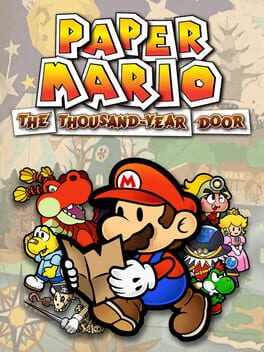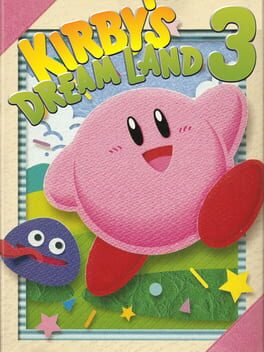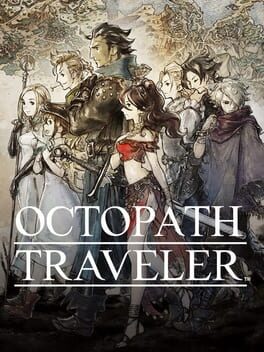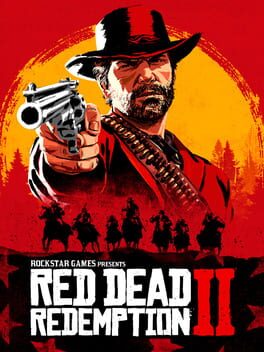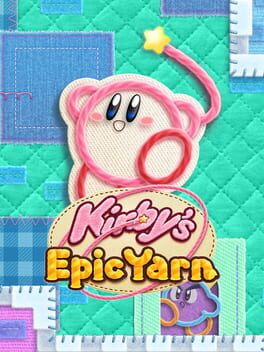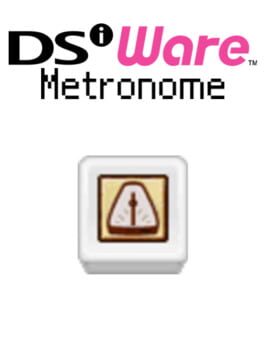Latios212
8 Reviews liked by Latios212
Most of my favorite RPGs are favorites for one specific reason. Maybe the RPG mechanics are interesting and complex, or maybe the story is super well-written, or maybe I just really enjoy being in the world the developers have crafted. TTYD, though, is the whole package.
TTYD's story isn't super deep or anything, but it's incredibly charming and full of character. It's got a very different tone compared to the first game, but it somehow fits Mario super well.
The world is filled with so many memorable characters and locations, most of them decidedly un-Mario-like. NPCs have tons of dialogue which changes as you progress through each chapter, there's a surprising amount of lore about the old city and Thousand-Year Door, and locations are varied and detailed. It all serves to make the world feel like a real, lived-in place. While Super Paper Mario has a more involved story, it doesn't quite nail this aspect.
The visuals are varied and gorgeous, and every single chapter brings you to completely different places. I really love the bold, saturated, outlined style they used for this and SPM. The audio design and music are super unique as well, there really isn't another soundtrack that sounds like this. Prior to Paper Mario, Yuka Tsujiyoko, Yoshito Hirano, Saki Haruyama mainly worked on the Fire Emblem series, so it really sounds like they had a field day making all sorts of bouncy electronic music with fun samples and whatnot instead of more traditionally-orchestrated pieces. It's sometimes a bit overbearing to listen to on its own, but it fits the tone of the game perfectly.
The combat is the star of the show here, I think. It expands on 64's system with new interactions with audience members and stage hazards. Not much of this is explained explicitly in-game, but you have a surprising amount of control over the stage and audience. Combined with the returning badge and leveling systems, these create a mechanically rich battle system that rewards experimentation and knowledge of your and your enemies' moves. What sets it (and most other Mario RPGs) apart from many other JRPGs is the excellent animation and sound design which gives all attacks and guards satisfying audiovisual feedback. This is something you just don't see in many other games in this genre, especially action RPGs which could really benefit from stuff like this. Despite Mario RPGs in general having a reputation of being entry-level JRPGs, the systems here has way more depth than a lot of its competition. It's just that most enemies are comparatively weak, so if you know what you're doing, you can easily steamroll most of the game. Double Pain and Unsimplifier act as impromptu hard modes, but this game could have really used some better enemy AI and more enemy designs in general. There are a lot more pallete swaps compared to 64.
It's true that the overworld design is much more linear and streamlined compared to 64, but in some ways I kind of prefer it's simplicity and straightforwardness. The quest design sometimes works against this by requiring you to backtrack, but it's not nearly as big an issue as it's made out to be. This is a 15-20ish-hour game, and the backtracking is such a small fraction of that.
My only real gripe, aside from the enemy design as mentioned earlier, is how much stuff is directly lifted from 64. TTYD does more than enough of its own thing to stand out, but it would have been nice to see some different species for partners and some new enemy types aside from Spinias, Craws, and Wizzerds. There's a quiz show minigame, Chapter 5 is set on an island, there's a mystery involving a penguin, there are three toad sisters that comment on events throughout the game, there's a puzzle involving buying two items in order, and several other similar scenarios. Almost all the badges were lifted from 64. At times, TTYD can feel like a remixed version of that game. But, like I said, it does more than enough to stand out as a unique experience, so it's not too big of an issue.
Overall, it's just a really fun, charming game with lots of room for interesting builds and experimentation.
TTYD's story isn't super deep or anything, but it's incredibly charming and full of character. It's got a very different tone compared to the first game, but it somehow fits Mario super well.
The world is filled with so many memorable characters and locations, most of them decidedly un-Mario-like. NPCs have tons of dialogue which changes as you progress through each chapter, there's a surprising amount of lore about the old city and Thousand-Year Door, and locations are varied and detailed. It all serves to make the world feel like a real, lived-in place. While Super Paper Mario has a more involved story, it doesn't quite nail this aspect.
The visuals are varied and gorgeous, and every single chapter brings you to completely different places. I really love the bold, saturated, outlined style they used for this and SPM. The audio design and music are super unique as well, there really isn't another soundtrack that sounds like this. Prior to Paper Mario, Yuka Tsujiyoko, Yoshito Hirano, Saki Haruyama mainly worked on the Fire Emblem series, so it really sounds like they had a field day making all sorts of bouncy electronic music with fun samples and whatnot instead of more traditionally-orchestrated pieces. It's sometimes a bit overbearing to listen to on its own, but it fits the tone of the game perfectly.
The combat is the star of the show here, I think. It expands on 64's system with new interactions with audience members and stage hazards. Not much of this is explained explicitly in-game, but you have a surprising amount of control over the stage and audience. Combined with the returning badge and leveling systems, these create a mechanically rich battle system that rewards experimentation and knowledge of your and your enemies' moves. What sets it (and most other Mario RPGs) apart from many other JRPGs is the excellent animation and sound design which gives all attacks and guards satisfying audiovisual feedback. This is something you just don't see in many other games in this genre, especially action RPGs which could really benefit from stuff like this. Despite Mario RPGs in general having a reputation of being entry-level JRPGs, the systems here has way more depth than a lot of its competition. It's just that most enemies are comparatively weak, so if you know what you're doing, you can easily steamroll most of the game. Double Pain and Unsimplifier act as impromptu hard modes, but this game could have really used some better enemy AI and more enemy designs in general. There are a lot more pallete swaps compared to 64.
It's true that the overworld design is much more linear and streamlined compared to 64, but in some ways I kind of prefer it's simplicity and straightforwardness. The quest design sometimes works against this by requiring you to backtrack, but it's not nearly as big an issue as it's made out to be. This is a 15-20ish-hour game, and the backtracking is such a small fraction of that.
My only real gripe, aside from the enemy design as mentioned earlier, is how much stuff is directly lifted from 64. TTYD does more than enough of its own thing to stand out, but it would have been nice to see some different species for partners and some new enemy types aside from Spinias, Craws, and Wizzerds. There's a quiz show minigame, Chapter 5 is set on an island, there's a mystery involving a penguin, there are three toad sisters that comment on events throughout the game, there's a puzzle involving buying two items in order, and several other similar scenarios. Almost all the badges were lifted from 64. At times, TTYD can feel like a remixed version of that game. But, like I said, it does more than enough to stand out as a unique experience, so it's not too big of an issue.
Overall, it's just a really fun, charming game with lots of room for interesting builds and experimentation.
Super Mario RPG
2023
I like Super Mario RPG a lot. I replay it every few years and figured this time I would play the Switch version. It's good, about as good as the original, but the entire time playing I had this thought in the back of my head...
Why does this exist?
Is it to improve the original game? Or to provide a fresh perspective? It doesn't really do either, like it barely does anything different at all. What is or is not an improvement is subjective, of course, but there isn't much I would consider to be improved aside from the fast travel. The post-game boss rematches are neat but they're not really that big a step up from the rest of the game. The graphics are nice, but they always were. The arranged music is arguably worse, lacking the punchy drums and bass of the original.
It really is just Super Mario RPG, again, with no changes of substance, and because of that feels like a waste of development time and resources. The SFC/SNES original is a fantastic game, and there's nothing in the remake that makes me want to play either version over the other. It just kind of exists.
I wish remakes would take more risks. Game remakes are analagous to movie remakes and music remakes (covers), but those are more willing to go in new artistic directions compared to games. They stand up on their own as independent works. I often hear that safe video game remakes like Mario RPG preserve the "original experience," but the reality is that remakes are inherently their own experience. We should embrace that and realize that remakes shouldn't be so beholden to their audience's expectations.
Part of the issue is that the original versions of many games are no longer accessible. Maybe it would be too costly to port, or maybe the source code was lost so they'd need to remake the game anyway to bring it to current platforms. But Super Mario RPG was on the SNES Mini, surely Nintendo would be able to put it on NSO. They just didn't want to, so you would pay $60 for it again. Luckily, all these problems have already been solved with fan emulation and archival projects, and we all have access to almost every version, be that a revision, remaster, remake, etc., of any game. All easily accessible to everyone. In an ideal world, these would be available on official storefronts too, but I guess that's too much work. What I'm trying to say is, fans are preserving games better than any company could, so remakes ought to have their own unique vision instead. It'll never be that way because game companies have an adversarial relationship with emulation, but one can dream...
I digress. Super Mario RPG is a fine game, this remake is simply unambitious and uninteresting to me.
Why does this exist?
Is it to improve the original game? Or to provide a fresh perspective? It doesn't really do either, like it barely does anything different at all. What is or is not an improvement is subjective, of course, but there isn't much I would consider to be improved aside from the fast travel. The post-game boss rematches are neat but they're not really that big a step up from the rest of the game. The graphics are nice, but they always were. The arranged music is arguably worse, lacking the punchy drums and bass of the original.
It really is just Super Mario RPG, again, with no changes of substance, and because of that feels like a waste of development time and resources. The SFC/SNES original is a fantastic game, and there's nothing in the remake that makes me want to play either version over the other. It just kind of exists.
I wish remakes would take more risks. Game remakes are analagous to movie remakes and music remakes (covers), but those are more willing to go in new artistic directions compared to games. They stand up on their own as independent works. I often hear that safe video game remakes like Mario RPG preserve the "original experience," but the reality is that remakes are inherently their own experience. We should embrace that and realize that remakes shouldn't be so beholden to their audience's expectations.
Part of the issue is that the original versions of many games are no longer accessible. Maybe it would be too costly to port, or maybe the source code was lost so they'd need to remake the game anyway to bring it to current platforms. But Super Mario RPG was on the SNES Mini, surely Nintendo would be able to put it on NSO. They just didn't want to, so you would pay $60 for it again. Luckily, all these problems have already been solved with fan emulation and archival projects, and we all have access to almost every version, be that a revision, remaster, remake, etc., of any game. All easily accessible to everyone. In an ideal world, these would be available on official storefronts too, but I guess that's too much work. What I'm trying to say is, fans are preserving games better than any company could, so remakes ought to have their own unique vision instead. It'll never be that way because game companies have an adversarial relationship with emulation, but one can dream...
I digress. Super Mario RPG is a fine game, this remake is simply unambitious and uninteresting to me.
Kirby's Dream Land 3
1997
Dream Land 3 is one of those games that appears lacking on the surface, but everything comes together in such a unique and beautiful way.
The animal friends are back along with three new ones, and it's tons of fun playing around with different ability/animal combinations. Cleaning was added as a new ability, it's really cute (especially with Nago) and many of its animal combinations are surprisingly effective against enemies. The sprites and animations are all super expressive.
The level designs are basic as with most Kirby games, though still quite memorable and fun. Each stage has its own puzzle you must solve to get a heart star, all of which are needed to face the final boss.
The visual and sound direction is some of the best in the entire Kirby series, only surpassed by Epic Yarn and Mass Attack.
You don't have as many techniques and moves as you do in Super Star or any other main game after 64. But, to me, Kirby isn't about that stuff anyway.
If it isn't obvious enough from the above, or from my Epic Yarn review, Kirby games are something I admire deeply not only on a gameplay level, but on an aesthetic one. If I wanted to play an action-platformer, there are many more challenging and engaging options out there for me besides Kirby. But Dream Land 3 offers something I can't get elsewhere, quite literally a land of dreams filled with incredible charm and atmosphere. It even has 2-player coop.
The animal friends are back along with three new ones, and it's tons of fun playing around with different ability/animal combinations. Cleaning was added as a new ability, it's really cute (especially with Nago) and many of its animal combinations are surprisingly effective against enemies. The sprites and animations are all super expressive.
The level designs are basic as with most Kirby games, though still quite memorable and fun. Each stage has its own puzzle you must solve to get a heart star, all of which are needed to face the final boss.
The visual and sound direction is some of the best in the entire Kirby series, only surpassed by Epic Yarn and Mass Attack.
You don't have as many techniques and moves as you do in Super Star or any other main game after 64. But, to me, Kirby isn't about that stuff anyway.
If it isn't obvious enough from the above, or from my Epic Yarn review, Kirby games are something I admire deeply not only on a gameplay level, but on an aesthetic one. If I wanted to play an action-platformer, there are many more challenging and engaging options out there for me besides Kirby. But Dream Land 3 offers something I can't get elsewhere, quite literally a land of dreams filled with incredible charm and atmosphere. It even has 2-player coop.
Octopath Traveler
2018
That I enjoyed this as much as I did I think is a testament to the fundamentals of great JRPG design. From the more restricted (compared to Bravely Default/Second/FF5) yet better-balanced job system, to the combat which branches off from the Bravely series with its own shield and weakness mechanics, to the beautiful town and dungeon designs, to the excellent soundtrack composed by Yasunori Nishiki, reminiscent of the Romancing Saga soundtracks.
Because if all that stuff wasn't as good as it is, I wouldn't have wanted to push through the forgettable story and bland world. The characters are well-written, but the 4-chapter setup makes their stories feel quite predictable and samey. The true final boss gauntlet is one of the biggest difficulty spikes I've seen in an RPG... not sure whether I'm impressed or annoyed by that.
Because if all that stuff wasn't as good as it is, I wouldn't have wanted to push through the forgettable story and bland world. The characters are well-written, but the 4-chapter setup makes their stories feel quite predictable and samey. The true final boss gauntlet is one of the biggest difficulty spikes I've seen in an RPG... not sure whether I'm impressed or annoyed by that.
Earned "perfect" stars on all 136 levels, beat the Time Attack target time on each one, then finished by maxing out my lives counter. Mario vs. Donkey Kong is a fun time if you enjoyed Donkey Kong on the Game Boy, and though the remake's extra levels may not warrant a $50 price tag, give the demo a shot if you're interested in trying something different from your conventional Mario platformer.
Kirby's Epic Yarn
2010
This is the long-lost evolution of Dream Land 3. Long levels, slow movement, very easy, low stakes, but extremely strong visual design, soundtrack, and overall charm. It's a game that lives and dies by its presentation, so if you aren't immediately hooked it's safe to say you wouldn't care for the rest.
The gameplay is pretty fun, though. It's more similar to classic Castlevania, it even has those grapple things you can swing on from IV and Bloodlines. I appreciate how simple to pick up and understand it is, which makes it a great fit for co-op. Similar to NSMB Wii, you can pick up and throw your friend around, but it's much more useful here because the other player acts as a projectile you can use to defeat enemies or as a platform to reach higher areas. The vehicle transformations work similarly to those in Yoshi's Island, but most of them don't really mesh well with the game outside of the shmup sections. It feels mostly like an excuse to shove in those Wii motion features.
It's the little details that make the game special. The distinct visual identity of each of the 43 stages, how most of them have a unique music track (done by the legendary Tomoya Tomita, along with some excellent arrangements from Ishikawa/Ando/Ikegami), how the collectibles are furniture and decorations for your apartment, how Kirby's friends will visit that apartment. There's never been a more fitting studio name than Good-Feel.
The gameplay is pretty fun, though. It's more similar to classic Castlevania, it even has those grapple things you can swing on from IV and Bloodlines. I appreciate how simple to pick up and understand it is, which makes it a great fit for co-op. Similar to NSMB Wii, you can pick up and throw your friend around, but it's much more useful here because the other player acts as a projectile you can use to defeat enemies or as a platform to reach higher areas. The vehicle transformations work similarly to those in Yoshi's Island, but most of them don't really mesh well with the game outside of the shmup sections. It feels mostly like an excuse to shove in those Wii motion features.
It's the little details that make the game special. The distinct visual identity of each of the 43 stages, how most of them have a unique music track (done by the legendary Tomoya Tomita, along with some excellent arrangements from Ishikawa/Ando/Ikegami), how the collectibles are furniture and decorations for your apartment, how Kirby's friends will visit that apartment. There's never been a more fitting studio name than Good-Feel.
